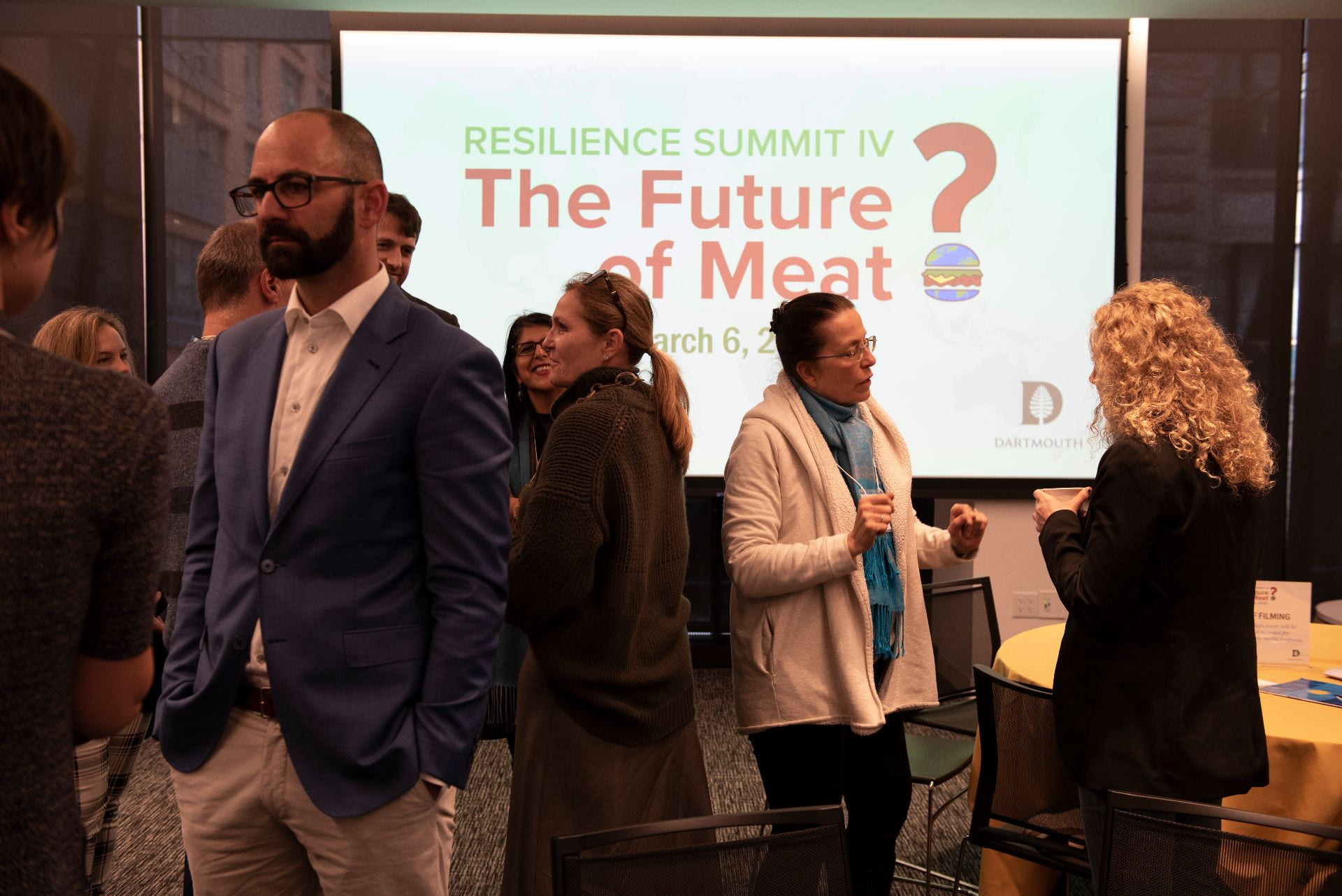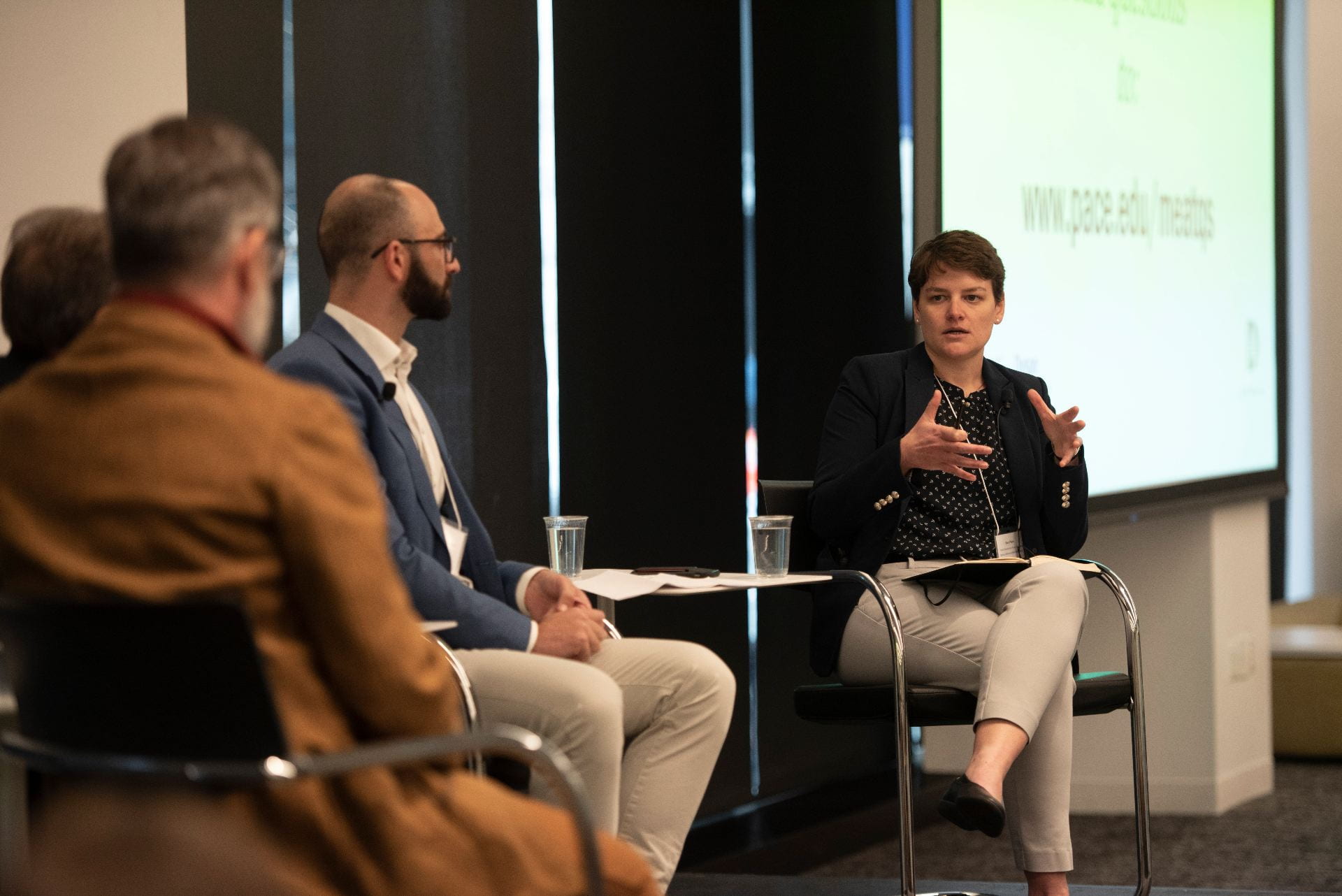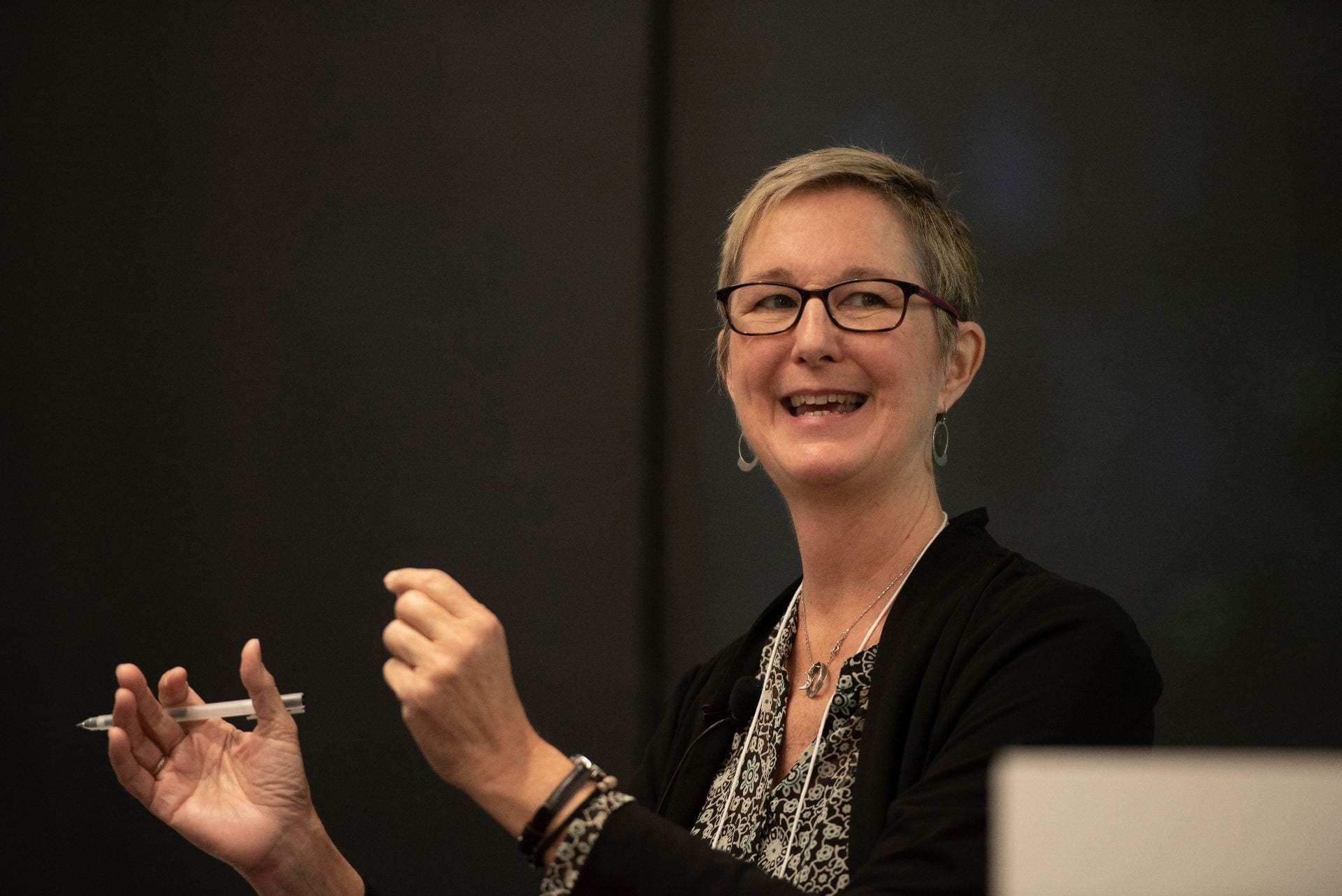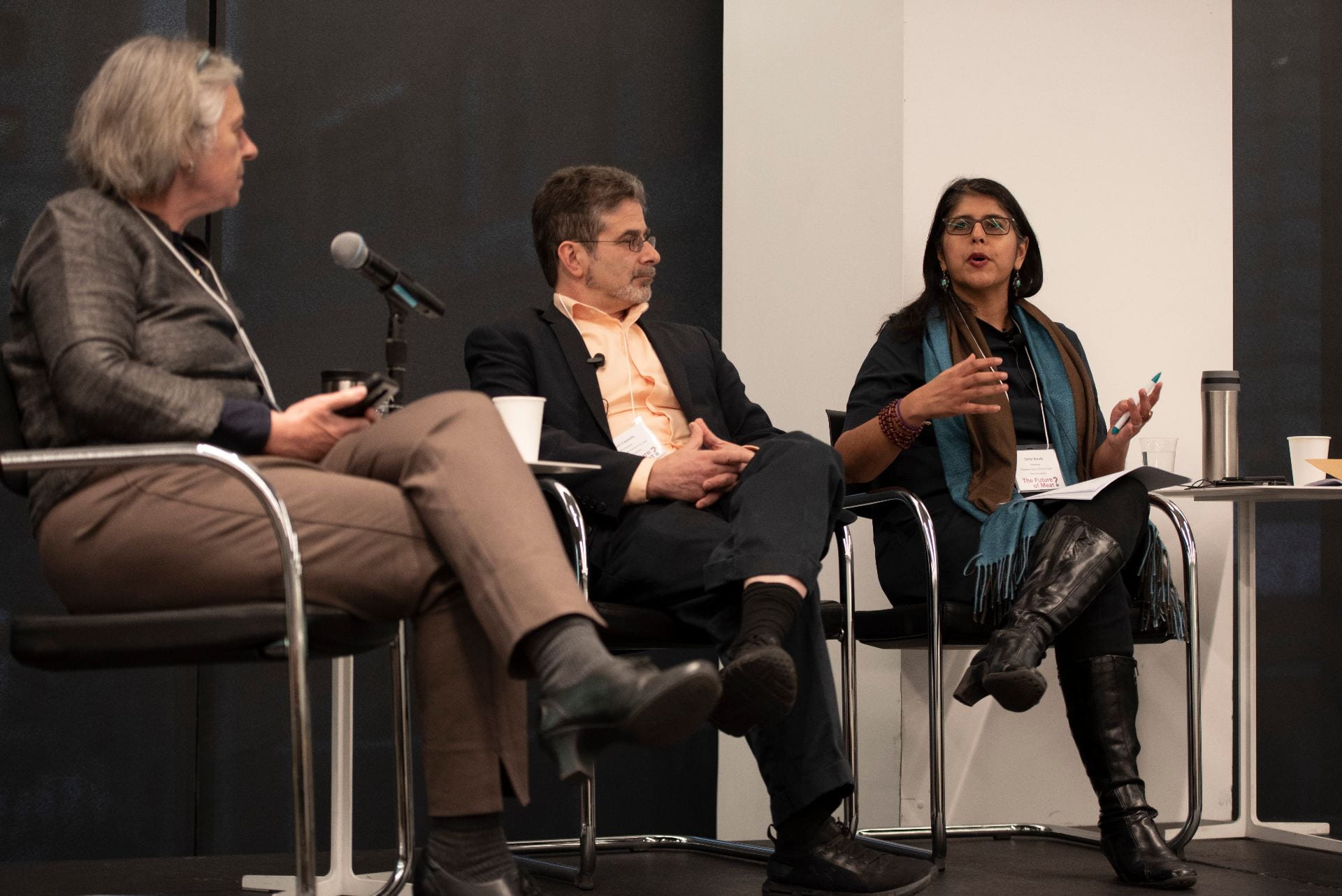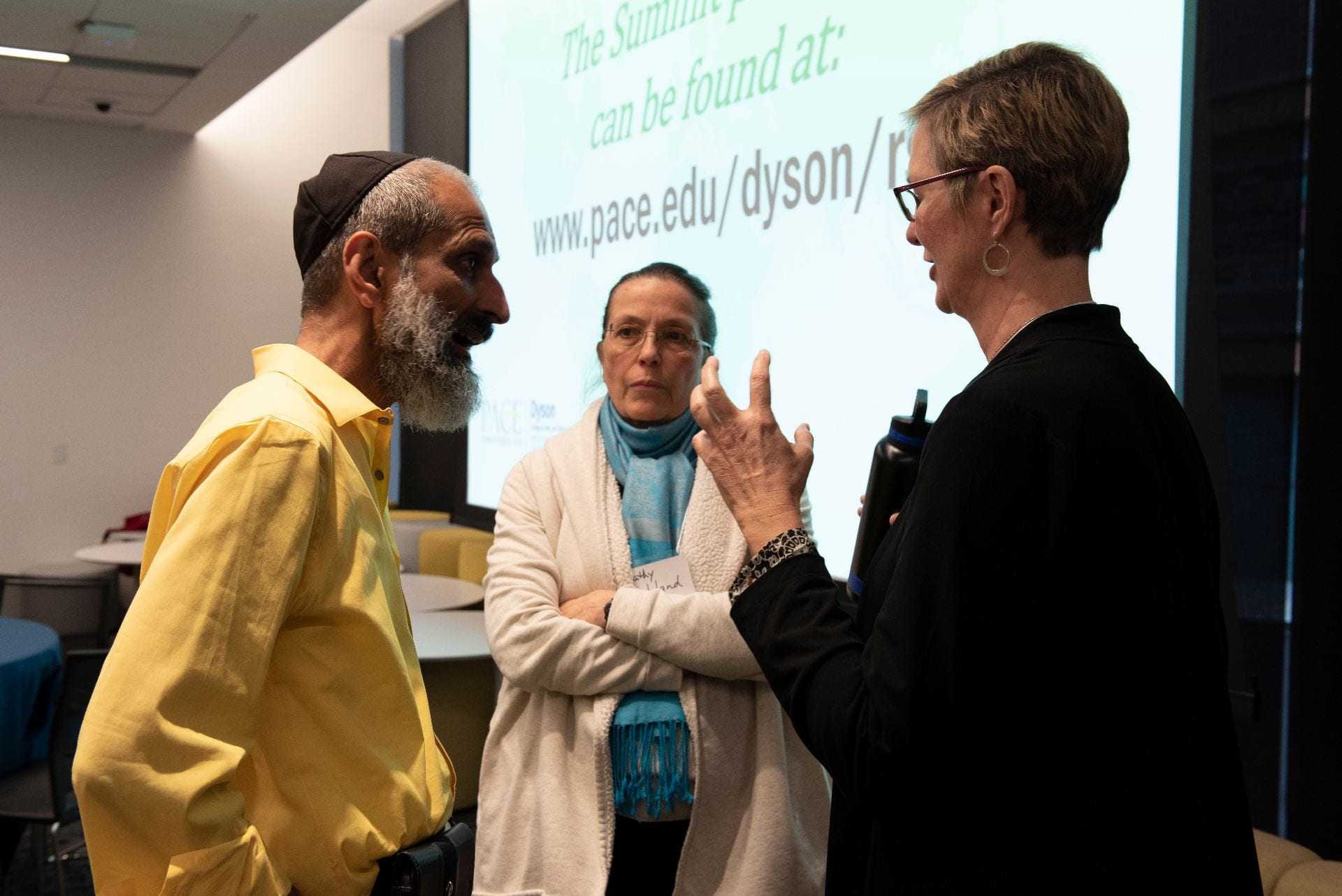Resilience summit iv: the future of meat
How do we define an agriculture that is good for farmers, animals, consumers, and the earth?
On March 6, 2020 at Pace’s New York City campus, Dyson College and DCISE presented the Resilience Summit IV: The Future of Meat? The day-long conference brought together different perspectives from scientists, farmers, ethicists, and activists to have an open conversation about regenerative and plant-based meat, the relationship between livestock production and climate change, nutrition and consumer diets, the future role of animals in the agricultural system, and how the world will obtain its protein in the future.
What are the issues?
Meat is considered the center of the Standard American Diet with Americans eating four times more meat than the global average.
The UN predicts that consumption of animal-based food will rise 80 percent in the next few decades. This rise in global meat-eating threatens to increase deforestation in the Amazon and other parts of the world, with the expansion of land needed for pasture, corn and soybeans. Yet, many people around the world are protein-deficient, and nutritionists argue that meat can help fill that need, while livestock farming communities are arguing for another approach – regenerative agriculture.
At the Future of Meat? Summit, participants focused on these five issues:
#1: Should Americans Eat That Much Meat?
Some scientists are asking this question, while others ask whether we should eat meat at all. In 2017, Pace University faculty began a conversation with scientists on this topic. In partnership with Dartmouth College, we brought together scientists, activists, and farmers to ask questions about the livestock and dairy production systems at the Cows, Land, and Labor Conference at Dartmouth in April of 2019. What we found is that not only do the answers to those questions remain uncertain and controversial, but also that the responses profoundly affect farming as a way of life.
#2: Is the Answer to Restructure the Livestock System?
Another group of scientists say the answer is to restructure the meat production system—to have animals on intensive managed pasture. Not only would intensive pasture management sequester carbon through animal-grass systems that contribute to rich soil, it would also allow animals to be raised more humanely. However, how many animals can we raise on intensive pasture systems as opposed to Confined Animal Farm Operations (CAFOs)? Can regenerative livestock systems produce the protein necessary in a world of rapid population growth and rising incomes, while minimizing livestock’s impact on climate?
#3: Are We Getting the Numbers Right about Livestock and Climate?
A third group of scientists question the metrics used to describe the effect of livestock on climate. They are looking into how these numbers are produced and the assumptions behind these calculations. Are the methane emissions numbers correct? Is the effect of methane on climate fully understood? Do some current livestock production systems have lower impacts? For example, is the US system more efficient and less environmentally harmful than, say, China’s? If so, should that make a difference? These scientists argue that we should make sure we have the right numbers before making decisions about how to change livestock agriculture.
#4: What are Consumer Concerns?
The health claims about meat and its alternatives are also increasingly controversial. Some nutritionists have questioned the figures on the health effects of cholesterol and fat, while other nutritionists have presented new findings on the benefits of plant-based diets. The new meat alternatives, such as Beyond Meat and Impossible Burger, are equally controversial. Proponents argue that this new type of vegetable-based ‘meat’ will reduce our climate impact, be more humane, and be healthier to eat. At the same time, proponents of these alternative meats have been marketing their brands by highlighting criticisms of the livestock-based meat system. Critics are scrutinizing the environmental and health claims of the plant-based ‘meats’ and argue that the plant-based critique of the livestock system is a way to fund start-ups and gain the confidence of venture capitalists. These critics are increasingly questioning the health and environmental claims made by plant-based ‘meat’ marketing.
#5: Where do We Go from Here?
What is the protein-production system of the future? Can regenerative agriculture provide the protein necessary to feed the world in the coming decades? Or should we work to get more food out of less land, leaving the rest uncultivated? Should we move to a more plant-based diet and eat more plant-based and/or cellular ‘in-vitro’ meat? This conference brought together scientists, farmers, ethicists, and activists to discuss the question of meat-eating in our dietary future.
Explore previous resilience summits
Resilience Summit I: Securing Our Future through Public-Private Partnerships
Co-sponsored by the Center for Homeland Defense and Security (CHDS) University Agency and Partnership Initiative, the summit provided a forum for discussion on emerging practices of public-private partnerships in emergency management.
Resilience Summit II: The Next Storm
Leaders from key industries and divisions of government and research institutions engaged in a series of conversations focused on lessons that shaped public-private partnerships in ways that bolster urban resilience in the wake of Hurricane Sandy.
Resilience Summit III: WATER COOPERATION AND CONFLICT: THE LOCAL AND GLOBAL CHALLENGE
This conference convened experts and practitioners from the public, academic and private sectors to discuss collaborative problem-solving strategies for the protection and sharing of water resources, ranging from transboundary conflicts, to local water scarcity, to watershed management.
View research papers inspired by attendance at the summit, originally published in the Journal of Environmental Studies and Science, Volume 9, Issue 3, September 2019.

